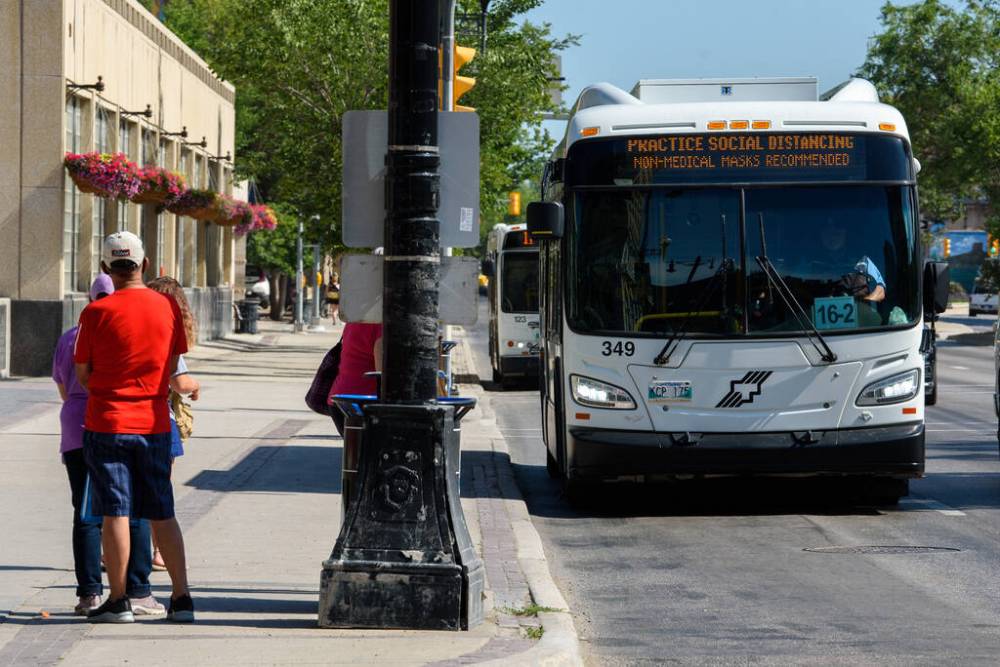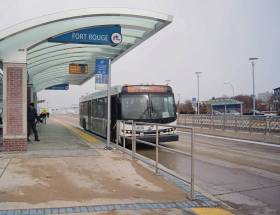Transit plan must address riders’ immediate concerns
Read this article for free:
or
Already have an account? Log in here »
To continue reading, please subscribe:
Monthly Digital Subscription
$0 for the first 4 weeks*
- Enjoy unlimited reading on winnipegfreepress.com
- Read the E-Edition, our digital replica newspaper
- Access News Break, our award-winning app
- Play interactive puzzles
*No charge for 4 weeks then price increases to the regular rate of $19.00 plus GST every four weeks. Offer available to new and qualified returning subscribers only. Cancel any time.
Monthly Digital Subscription
$4.75/week*
- Enjoy unlimited reading on winnipegfreepress.com
- Read the E-Edition, our digital replica newspaper
- Access News Break, our award-winning app
- Play interactive puzzles
*Billed as $19 plus GST every four weeks. Cancel any time.
To continue reading, please subscribe:
Add Free Press access to your Brandon Sun subscription for only an additional
$1 for the first 4 weeks*
*Your next subscription payment will increase by $1.00 and you will be charged $16.99 plus GST for four weeks. After four weeks, your payment will increase to $23.99 plus GST every four weeks.
Read unlimited articles for free today:
or
Already have an account? Log in here »
Hey there, time traveller!
This article was published 08/07/2022 (1249 days ago), so information in it may no longer be current.
The Winnipeg Transit Master Plan adopted by city council in 2021 is a splendid document. With inspirational vision, its 90 pages outline a long-range strategy that describes nothing less than a transit system “positioned to become people’s first choice for travelling around Winnipeg.”
Unfortunately, most Winnipeggers today would scoff at the suggestion that transit should be their “first choice” for transportation. Between the rising rate of violence aboard transit, bus shelters unavailable because they’re claimed by people with addiction and mental-health challenges, and route scheduling that is inefficient and unreliable, many Winnipeggers would consider transit a “dire choice.”
Violence aboard transit has become so prevalent that drivers say they are scared of being hit or stabbed even though they are trained on assault prevention and de-escalation techniques. Figures presented last week show the number of violent incidents is growing steadily, from 191 calls in 2019 to 252 in 2021.
Figures presented last week show the number of violent incidents is growing steadily, from 191 calls in 2019 to 252 in 2021.
On average, one Winnipeg transit driver resigns every week, with many citing safety concerns. When even drivers believe transit is too dangerous, that leads citizens to be apprehensive about transit ridership.
The unauthorized occupation of the shelters by people who have no intention of boarding a bus means the de-facto eviction of legitimate bus passengers, who are left exposed to rain, wind and freezing temperatures as they ponder whether transit should be their “first choice for travelling around Winnipeg.” Also of concern are the frequent full-bus bypasses or flat-out no-shows that leave travellers seeking reliably scheduled transit scratching their heads and searching for alternative modes of transport.
The issue of bus-shelter squatters came to a head last month when city council voted on a motion to make two shelters in Transcona less hospitable to people experiencing homelessness by removing the glass walls, seats and electrical units that provide light and heat. Dozens of individuals and advocacy groups criticized the proposal as merely displacing the city’s most vulnerable residents.

Councillors voted down the proposal, although none presented a better idea to return transit shelters to the passengers on whom depend the financial success of the transit system.
When people finally board the bus, they might be surprised to find that paying the fare — $3.10 for adults, $2.60 for students and seniors — now seems optional. People inclined to ride for free regularly breeze onto the bus without being challenged by the driver, part of a transit practice to avoid conflict. The obvious result of this only-pay-if-you-want-to-pay approach is less revenue for the system and a feeling among fare-paying passengers that transit is not being administered fairly.
It’s not that city hall is unaware of the recurring problems that make the transit experience uncomfortable and potentially unsafe. Recent safety initiatives include shields for drivers, video and audio surveillance and the hiring of more inspectors.
It’s not that city hall is unaware of the recurring problems that make the transit experience uncomfortable and potentially unsafe. Recent safety initiatives include shields for drivers, video and audio surveillance and the hiring of more inspectors.
Such measures are heading in the right direction but remain inadequate, judging by the rising rate of violence and the ongoing inability of authorities to effectively address concerns that discourage transit use.
A announcement on Thursday described how $539 million in multi-level government funding will be dedicated toward greener, faster buses. The investment is certainly welcome, but it doesn’t address the significant reasons so many Winnipeggers are reluctant to leave the security of their personal vehicles.
Where the rubber meets the road is the paying public. Until people feel safe aboard buses and while they’re waiting at transit stops, they’re not about to get on board, even if the new buses are faster and greener.











